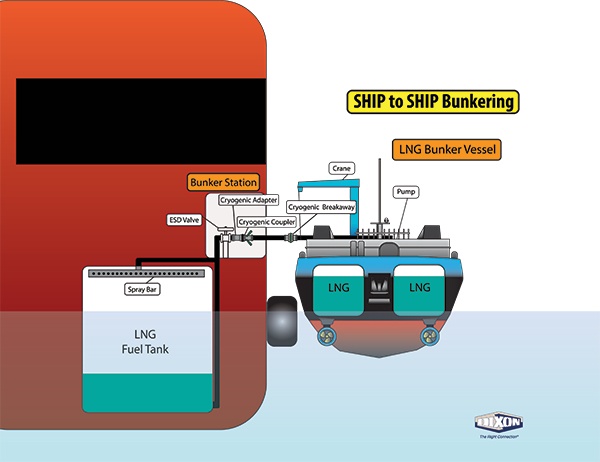The transfer and bunkering of Liquefied Natural Gas (LNG) involves ships, tanker trucks, and onshore facilities.
Ship-to-ship Method
Ship-to-ship LNG transfer operations include oceangoing vessels underway or harbor operations where a moored ship is typically docked at a pier. It can involve either a cargo transfer or a fueling operation for an LNG-propelled ship. Either way, the transfer operations demand strict safety standards and flawless execution considering the factors involved with two ships at sea.

Shore-to-ship Method
Shore-to-ship operations involve LNG being transferred to a ship from an onshore storage terminal or depot. Shore-to-ship operations are performed in sensitive environments where safety concerns are critical. Of paramount importance is the need to have simultaneous operations (SIMOPS) happening at the same time as the fuel transfer, as minimizing time in port helps keep operating costs in line. Operations such as crew changes, offloading/on-loading of cargo, plus passenger departures and arrivals on cruise lines and ferries play a role in optimizing operational efficiencies and keeping their related costs under control.

Truck-to-ship Method
Truck-to-ship transfer operations occur where ships and ferries are fueled by tank trucks. The fueling is either a direct transfer from a tank truck to the ship or a system where several tank trucks connect to a fueling skid which then delivers the fuel to the ship. As these operations involve a number of tank trucks moving in and out of position to unload fuel for passenger ships and ferries, safety is of utmost concern.

This blog was excerpted from Liquefied Natural Gas: The Fuel of the Future for Shipping and Transport whitepaper.
